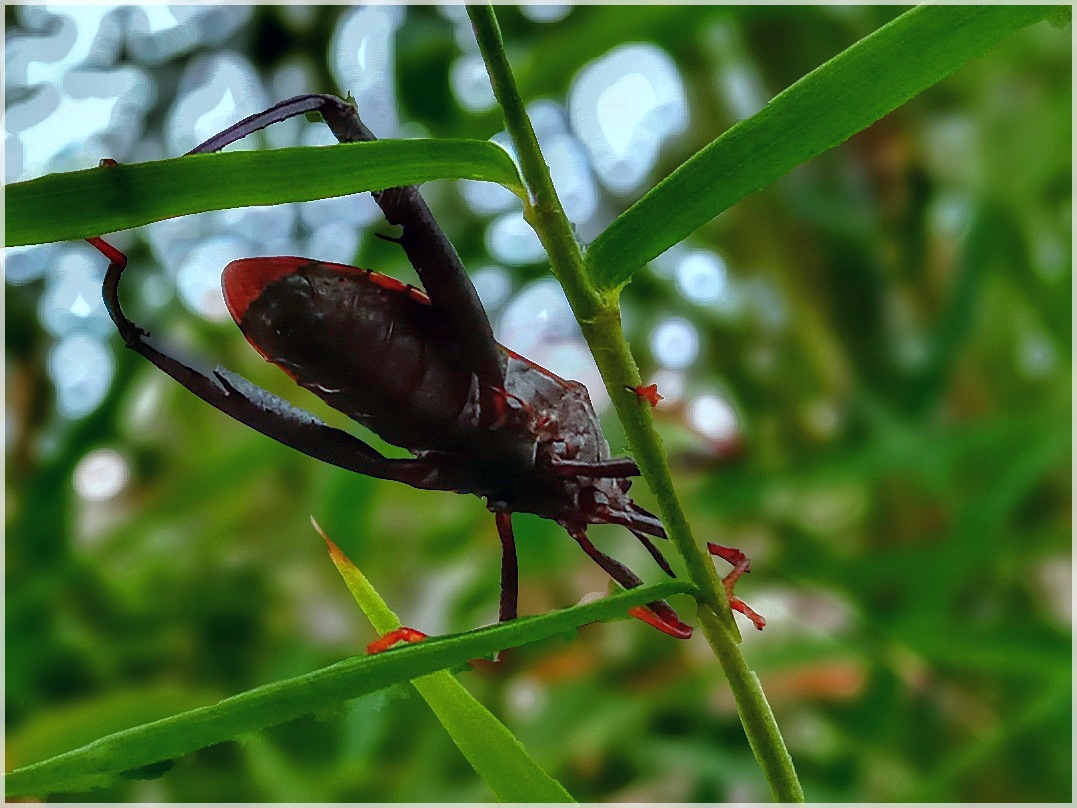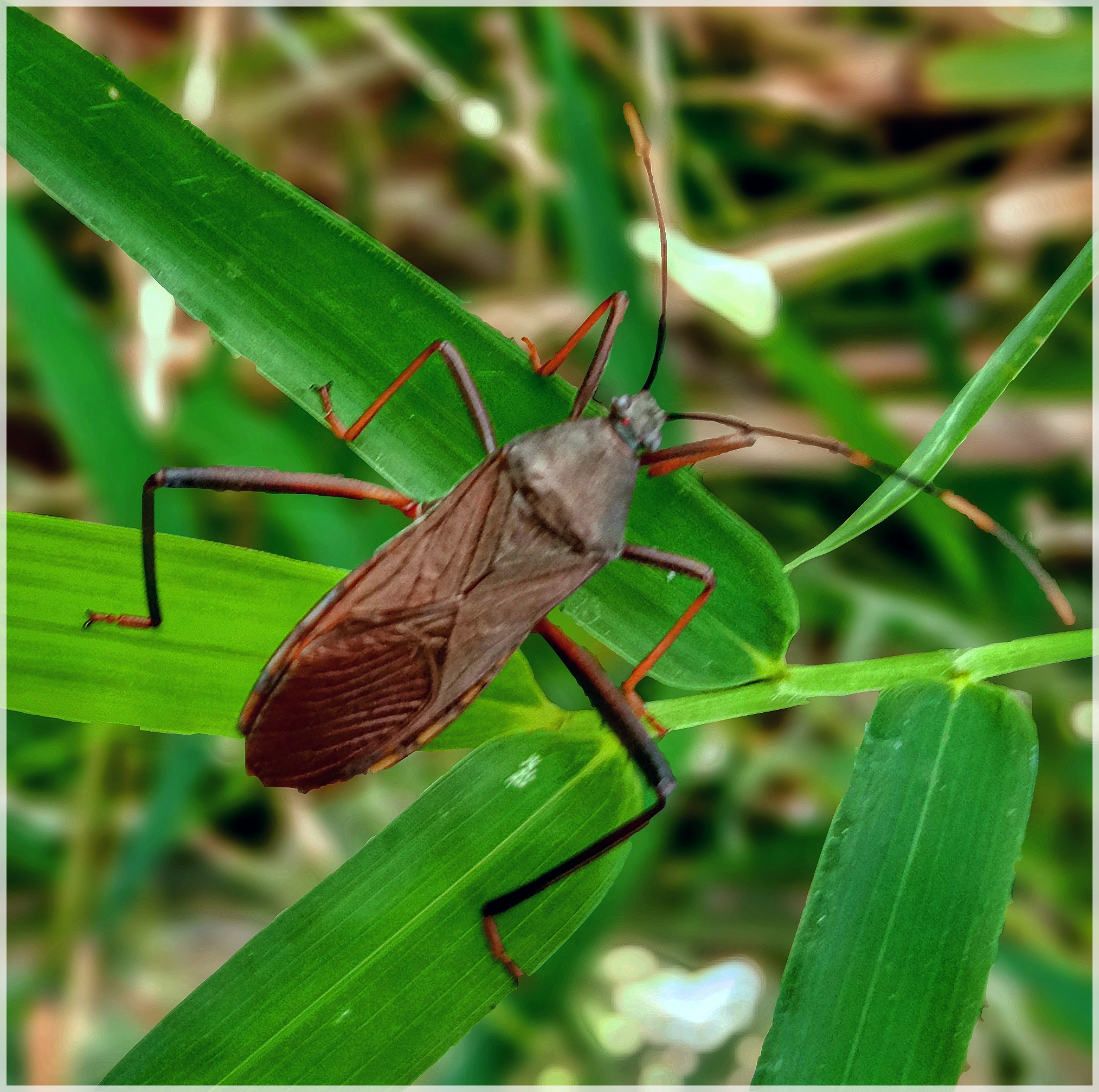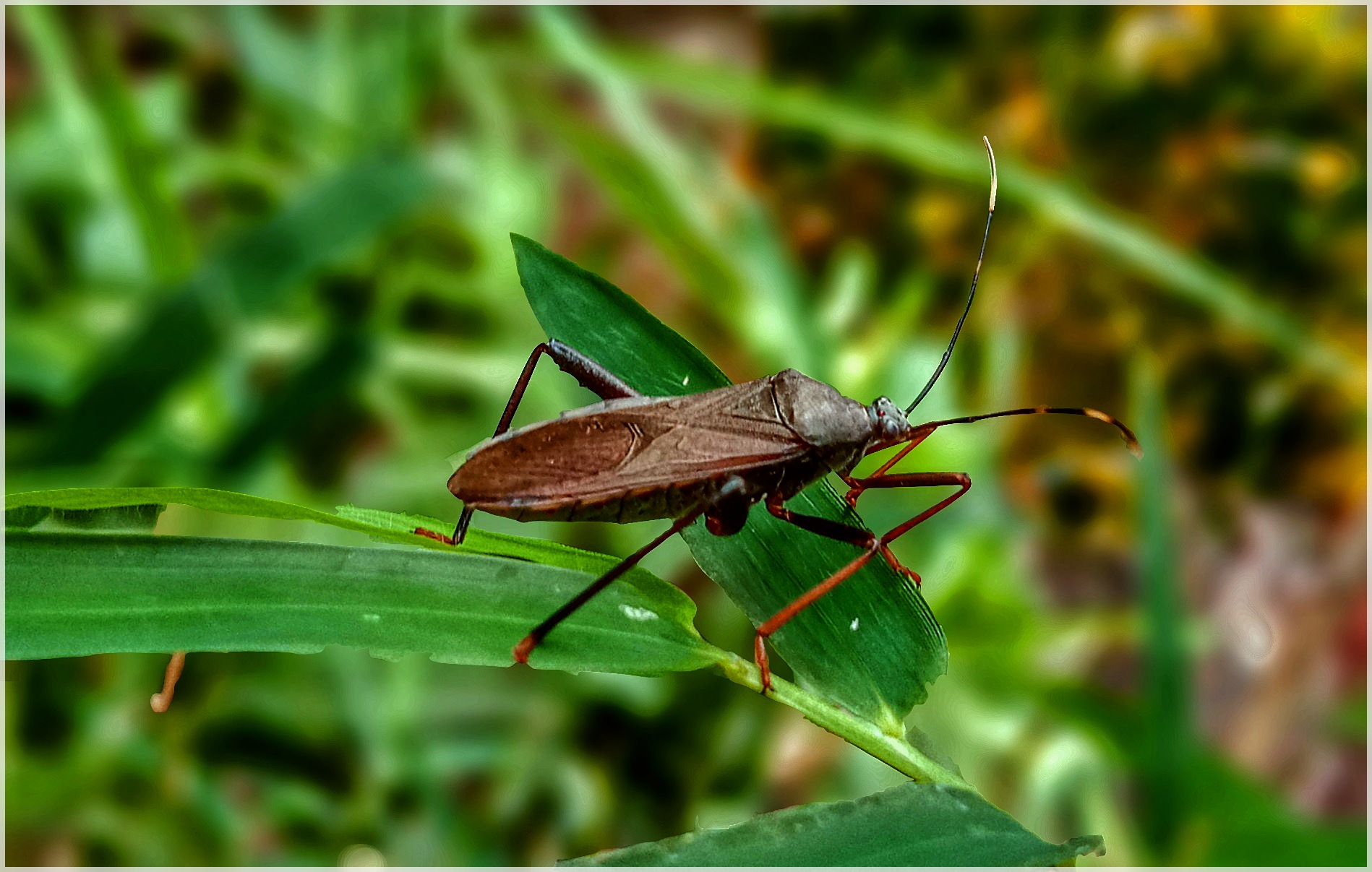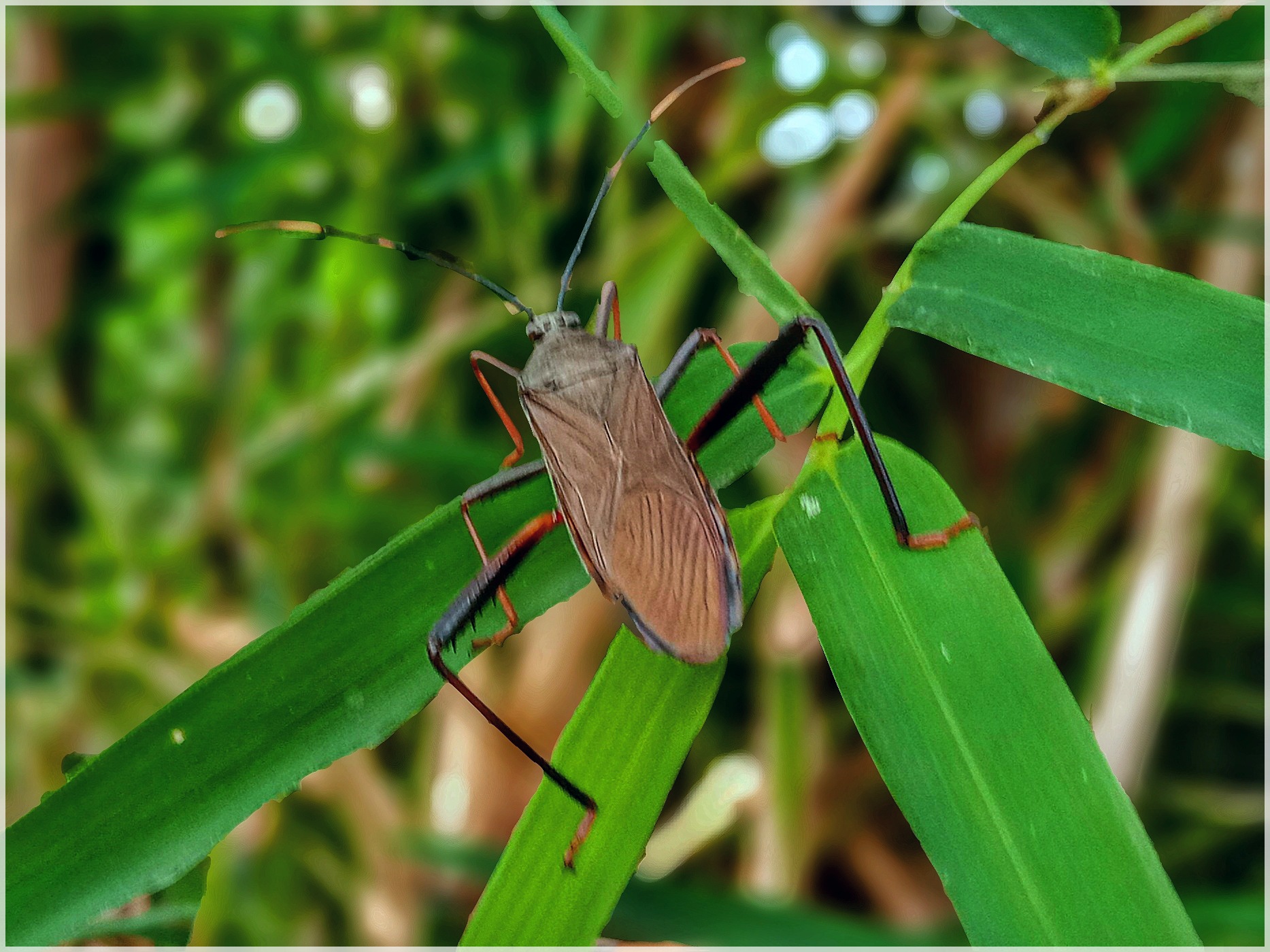Maybe when you meet one of these insect species, it is not foreign to you, because it is often seen and is often found by every plantation farmer or also yourself when visiting locations where wild plant habitats are.
That experience or event not only happened to you, but today I experienced it, why? Because accidentally met him in one of our backyards which has a potential habitat / wild plants that grow by themselves in that location.

It has become a character of them that every land that is neglected or left alone, of course, there will be seekers of forage in the form of plants, whether they are included in the category of wild plants or plants that are being cultivated.
As discussed above that the presence of wild plants or ornamental plants growing will automatically be visited by every group of insects that are included in the pest group. One of the many species often found is Walang Sangit, we certainly conclude that the name is based on our regional language with the intention of referring to it as a plant pest.
When the non-verbal language is agreed upon by a certain group, the mention becomes a characteristic that is pinned for it, with the aim of being a pest or leafhopper, and the name fits the character of the animal itself.

I personally agree with people who have dubbed it a planthopper or pest because its presence attacks every plant that is being cultivated.
This is supported by evidence in the field, because I have seen that since this month, ornamental plants in the form of ornamental bamboo plants some of their leaves have been damaged, while their population is increasing.

Uniquely, I saw that they were already numbered in a large capacity, it could be seen that a lot of their children had been born and controlled some of the ornamental bamboo trees. On the other hand, I also saw that there were no other insect species that also resided in the ornamental bamboo tree area. Here also can be seen they are very great able to repel or fortify any other insect pests that come to dominate a territory of their own.
If seen by farmers who are cultivating ornamental plants, their presence is already in the warning stage. If this is allowed, the results expected by farmers, namely the harvest will be impossible or can simply be said to be crop failure.

But what happened from my point of view, is not said to be a loss, why? Because their presence even in large populations does not cause crop failure because what they control is ornamental plants, not cultivated plants that will be expected to produce fruit.
So as such, I personally allowed their presence in the group, in the sense of letting it rule over the aforementioned territory. As long as the territorial area does not spread to other plants, or ornamental plants that are susceptible to death, or are weak from the attack side.

The attitude of allowing their presence here certainly has a specific purpose, why? Because indirectly with their presence there are also certain species of birds that always hunt and peg their bodies, at least the birds get special food, although in essence the impact of eating the body of this Sangit walang is unknown.
Not only certain birds that often hunt him, but I also see other birds such as chickens in our area also often hunt his body. But unfortunately, I didn't have time to take photos of the activities of the chickens mentioned above in the hunting process, this was due to the reluctance of the groups of chickens to be approached when it happened.

On the other hand, I myself am also reluctant to approach him closely because the scent on his body when touched will leave an unpleasant smell in someone's hands when nosy touch him.
So you also never touch his body directly without a mat (a barrier device) because your hands will leave a smell or smelly substance that resembles ammonia.
One tail that you touch with your hand, then the aroma will be felt, especially if it is collected in large quantities and then holding it, the rotten aroma will be felt so that it makes you feel dizzy when you smell it.

Perhaps the stench, which is found in certain body parts, is also something that is often avoided by other insect species, or the smell is also a weapon for other insect species when participating in controlling the same land.
However or the things mentioned above are related to the problem of smell, there is one group of insect species that does not respond to that smell, it is the big black ant. Seen, the black ants themselves are also in the leaves of the lush plants (ornamental bamboo trees).

In simple terms, the large black ant group also occupies the same branch of the plant on the same tree, it can be seen that the ant group often roams around the nest, although the ants do not nest on the branches of ornamental bamboo trees.
In conclusion, our ornamental bamboo trees are not only controlled by these Walang Sangit, but also controlled by big black ants, but what makes the difference is the nest, meaning the black ant nest nests in the ground even though the location for foraging is in the same location as Walang Sangit.
How about you? Do you also have the same experience as me, or have other experiences with Walang Sangit, if any, please provide input in the comments provided, thank you for visiting.

| Photo and Text Captions | ✎ & 📸 |
|---|---|
| 🅿🅾🆂🆃 🆃🅸🆃🅻🅴 | Walang Sangit and its sides |
| 💥 𝕃𝕠caţเØnˢ 𝓅H𝐨𝓣o⌖ | Indonesia |
| 𝗪𝗿𝗶𝘁𝗶𝗻𝗴 𝗗𝗲𝘀𝗰𝗿𝗶𝗽𝘁𝗶𝗼𝗻 | 𝕆𝕨𝕟 𝕨𝕣𝕚𝕥𝕚𝕟𝕘 |


The rewards earned on this comment will go directly to the person sharing the post on Twitter as long as they are registered with @poshtoken. Sign up at https://hiveposh.com.
Thank you for sharing this amazing post on HIVE!
Your content got selected by our fellow curator @hafizullah & you just received a little thank you via an upvote from our non-profit curation initiative!
You will be featured in one of our recurring curation compilations and on our pinterest boards! Both are aiming to offer you a stage to widen your audience within and outside of the DIY scene of hive.
Join the official DIYHub community on HIVE and show us more of your amazing work and feel free to connect with us and other DIYers via our discord server: https://discord.gg/mY5uCfQ !
If you want to support our goal to motivate other DIY/art/music/homesteading/... creators just delegate to us and earn 100% of your curation rewards!
Stay creative & hive on!
Thankyou so much @diyhub